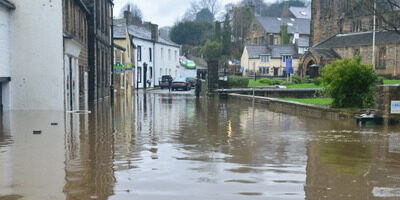Flood Risk: Change of Use in a London Flood Zone
We were asked to assess the potential significance of flood risk to a building which was being converted from commercial use to a more sensitive end use in London. The site was located in flood zone 3, close to the River Thames and the Grand Surrey Canal.
Our client took advantage of the FloodSmart Pro report as it was a more complex site needing detailed examination.
The site’s location was considered to be under threat of surface water, river and coastal and reservoir flooding. The flood risk assessment showed that although the building is located in a flood zone, the area’s defences are suitable to mitigate against flooding and for this reason an overall risk rating of low was given to the site.
The site is located in a predominantly industrial area, in close proximity to the River Thames and within an area designated by the Environment Agency as a flood zone 3, where the probability of tidal flooding from the river is classified as 1 in 200.
The area of the site would be classified as being at high risk of fluvial (river) and tidal (coastal) flooding if defences were not in place. The client was wishing to convert the ground floor of a commercial building and to construct a second floor whilst keeping the original building footprint.
Our specialist flood risk consultant conducted a detailed review of the data which indicated that though the site was close to the River Thames and the Grand Surrey Canal, the flood defences in the area of the site were sufficient to offer protection to the property, therefore reducing the risk level for the site.
We assessed the on-site and off-site flood risk. The proposed development did not involve changes to the existing building footprint and hard standing. Our report identified therefore that there would be no increase in impermeable surfaces or loss of flood plain storage within the site boundary.
Runoff from the development remained unchanged indicating that there would be no increase of flood risk from the site to any downstream receptors.
As part of the flood risk assessment a principal escape route was identified, should the site become inundated with water in the event of a barrier breach. The nearest accessible area would be a flood zone 1, approximately 400m east of the site.



